This is the default Maya render. Raytracing is not activated so there are no reflections or refractions. The default Maya Depth Map Shadows have been turned on. You can see the artifacts of the 512 resolution. Also, depth map shadows cannot render transparency, so the shadow of the glass torus is solid. |
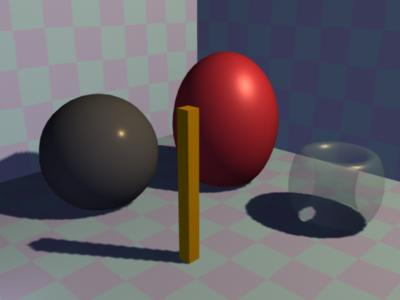 |
Raytracing and raytraced shadows have been turned on. Note that the shadow of the glass torus is now accurate. Refraction for the glass shadow has not been turned on so it simply looks transparent. Notice that the reflections in the balls do NOT have shadows. This is because the shadow limit is set to one. This means that shadows only are "bounced" once. When a shadow is in a reflection, that requires at least two "bounces." |
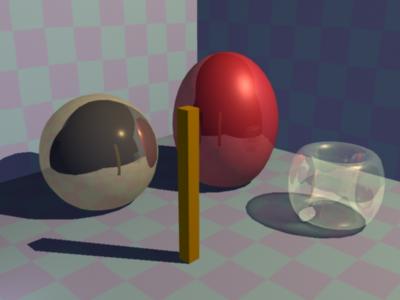 |
| Under the spotlight for this scene, the shadow limit has now been increased to 2. This allows the shadows to be seen in the reflections. | 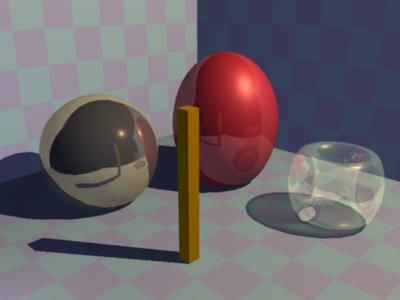 |
Refraction has been turned on in the shader of the glass. You can see how the glass is effecting the bending of the light as it goes through the glass. However, the refraction limit is only set at 2, thus the ray is traced only through 2 surfaces. In the center, there are 4 surfaces that the light has to go through, so those sections are black. |
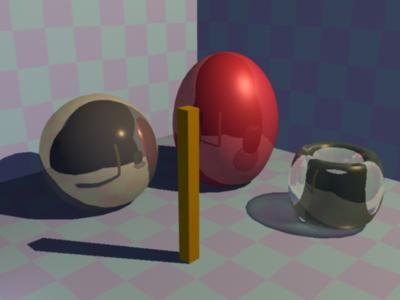 |
| The Refraction limit has been increased to 6. Now the rays are going completely through the object. | 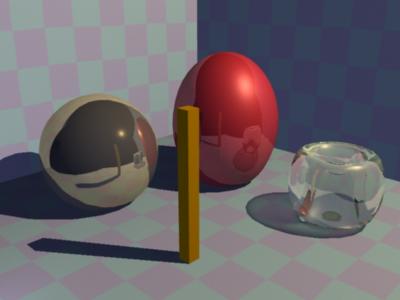 |
| In this example the Primary Visibility for the Yellow Post object has been turned off. It does not render. However, it still is casting its shadow and it appears in reflections. | 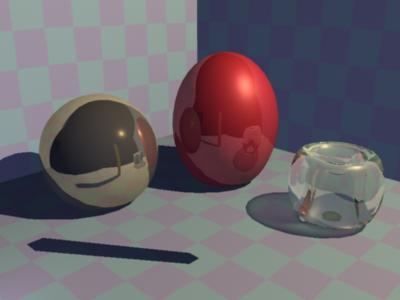 |